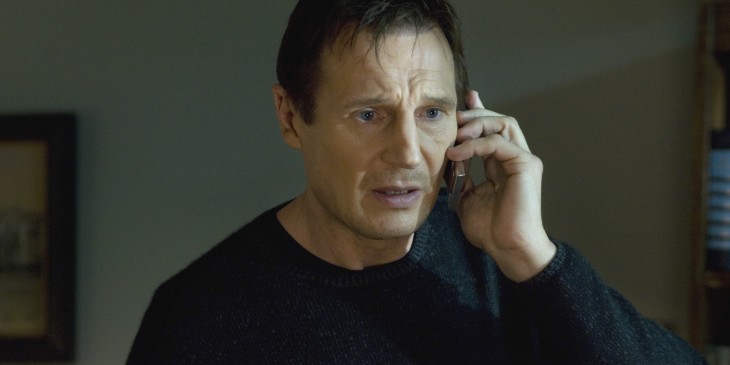Sean and his crew the mob from the previous film are in Los Angeles trying to make a living off of dancing but, every audition they go to they are turned down. The mob decides to leave Los Angeles and return to Miami thinking there is nothing left for them. Sean together with the help of Moose form a crew consisting of all the previous Step Up Characters to win a dance battle in Las Vegas, called the Vortex, for a chance of a 3 Year dancing contract. later in the film it also told that Andie has broken up with her past relationship with Chase and Sean with Emily, and it will also focus how Andie and Sean fall to each other's arms, even though the pressure of the winning the competition and the rivalry of Sean's former Dance Crew the MOB arise through Sean's mind.
 The film has been met with mixed reviews. On Rotten Tomatoes, the film holds a rating of 43% based on 40 reviews. and it says: "With slick choreography all too often interrupted by feeble attempts at plot, Step Up: All In would be more fun with all of its dialogue edited out". On Metacritic, the film has a score of 45 out of 100, based on 17 critics, indicating "mixed or average reviews
The film has been met with mixed reviews. On Rotten Tomatoes, the film holds a rating of 43% based on 40 reviews. and it says: "With slick choreography all too often interrupted by feeble attempts at plot, Step Up: All In would be more fun with all of its dialogue edited out". On Metacritic, the film has a score of 45 out of 100, based on 17 critics, indicating "mixed or average reviews
 Among these dancers is Sean (Ryan Guzman), one of the flash-mob leaders from Step Up 4: Miami Heat, now scraping a living in Los Angeles. Abandoned by his former associates, he decides to assemble a fresh crew composed of characters from previous Step Up films – though if you're wondering if original series star Channing Tatum might return for a cameo, don't hold your breath.
Among these dancers is Sean (Ryan Guzman), one of the flash-mob leaders from Step Up 4: Miami Heat, now scraping a living in Los Angeles. Abandoned by his former associates, he decides to assemble a fresh crew composed of characters from previous Step Up films – though if you're wondering if original series star Channing Tatum might return for a cameo, don't hold your breath.
Sean and his new friends head for Las Vegas to compete in a TV dance competition hosted by pop starlet Alexxa Brava, played gratingly by Izabella Miko, who looks like Michelle Pfeiffer and acts like one of the villains from The Hunger Games.

Here again, worrying hints of satire and cynicism threaten to undercut the naively wholesome charm that has defined the series from the outset. On the other hand, there are still no openly gay characters in the Step Up universe, which in 2014 seems surprising if not outright gutless.
The dance routines themselves have their moments, particularly when they involve Adam Sevani, who has the moves of the young Michael Jackson and some of the impish softness as well. His character, Moose, remains the biggest drawcard of the series – though perhaps for contractual reasons, he's used in only a handful of scenes.
What is missing here, aside from a certain amount of youthful zest, is a specifically cinematic energy. In the best parts of the earlier Step Up films the camera was fully integrated with the action, especially when following dancers through everyday settings in the manner of an old-fashioned Hollywood musical.
Nothing here matches Sevani's dancing-in-the-street tribute to Fred Astaire and Gene Kelly in Step Up 3D – still the peak of the series – or the art gallery sequence in Step Up 4. Even outside the TV competition, most of the dancing takes place in strictly delimited spaces; at worst, Sie seems to be cutting almost at random between fixed vantage points, as if mechanically covering a sports event.
Read more: http://www.smh.com.au/entertainment/movies/step-up-all-in-review-dance-franchise-runs-out-of-steam-20140910-10evya.html#ixzz3D48ijaAV

Sean and his new friends head for Las Vegas to compete in a TV dance competition hosted by pop starlet Alexxa Brava, played gratingly by Izabella Miko, who looks like Michelle Pfeiffer and acts like one of the villains from The Hunger Games.

Here again, worrying hints of satire and cynicism threaten to undercut the naively wholesome charm that has defined the series from the outset. On the other hand, there are still no openly gay characters in the Step Up universe, which in 2014 seems surprising if not outright gutless.
The dance routines themselves have their moments, particularly when they involve Adam Sevani, who has the moves of the young Michael Jackson and some of the impish softness as well. His character, Moose, remains the biggest drawcard of the series – though perhaps for contractual reasons, he's used in only a handful of scenes.
What is missing here, aside from a certain amount of youthful zest, is a specifically cinematic energy. In the best parts of the earlier Step Up films the camera was fully integrated with the action, especially when following dancers through everyday settings in the manner of an old-fashioned Hollywood musical.
Nothing here matches Sevani's dancing-in-the-street tribute to Fred Astaire and Gene Kelly in Step Up 3D – still the peak of the series – or the art gallery sequence in Step Up 4. Even outside the TV competition, most of the dancing takes place in strictly delimited spaces; at worst, Sie seems to be cutting almost at random between fixed vantage points, as if mechanically covering a sports event.
Read more: http://www.smh.com.au/entertainment/movies/step-up-all-in-review-dance-franchise-runs-out-of-steam-20140910-10evya.html#ixzz3D48ijaAV











